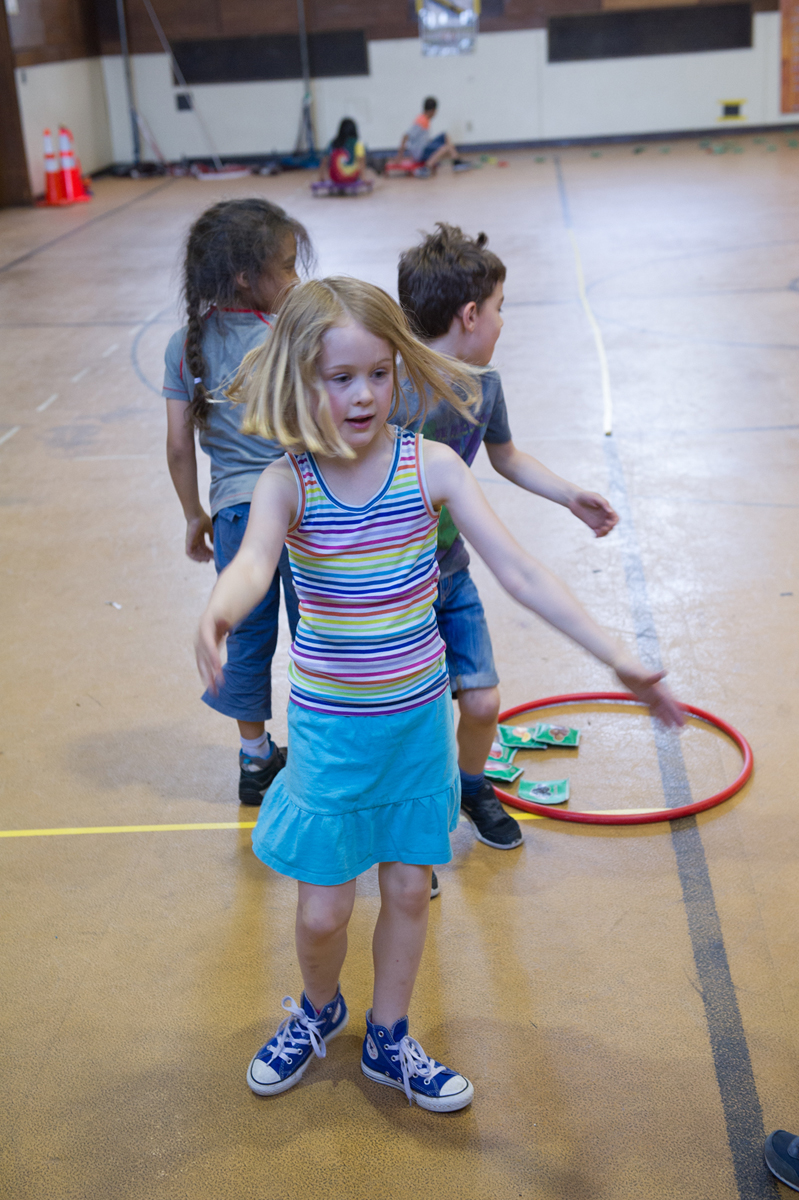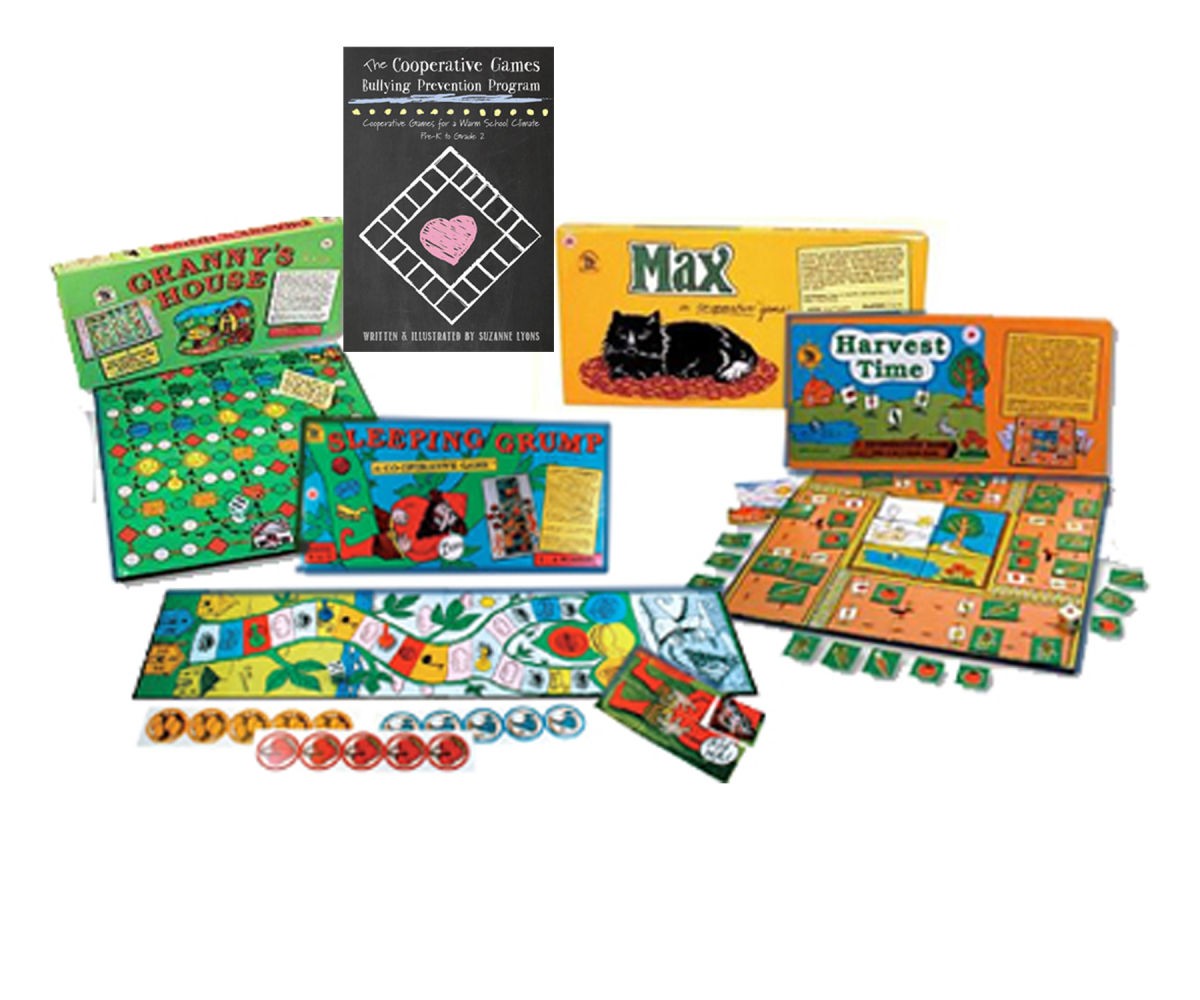A note about “games”: With today’s craze for electronic toys, you might be sur-prised at the effectiveness of these simple, almost old-fashioned games. They are really more like educational tasks than games, but introducing them as games, either competitive or cooperative, helps kids come to love them. Pandemic is a cooperative board game in which players work as a team to treat infections around the world while gathering resources for cures. First published in 2007, the game's unique combination of cooperative gameplay, engrossing premise, and compelling design have proved a hit with everyone from hardcore gamers to casual players. Some alternative games using a shower curtain: For the beginning of the year or for kindergarten: Write the letters of the alphabet onto cards. The children identify the letter name or the sound(s) that letter makes. Make index cards for upper and lower case letters. Give the students the lower case cards to match to the upper case liner. Cooperative games are often analysed through the framework of cooperative game theory, which focuses on predicting which coalitions will form, the joint actions that groups take and the resulting collective payoffs.
- Cooperative Games To Play On Zoom
- Cooperative Games In Physical Education
- Cooperative Games For Adults
- Cooperative Games For Preschoolers
- Cooperative Games
How often has this scenario played out in your classroom? You’ve planned a fantastic lesson that involves students working together and learning together. In your well-crafted plans, the students are engaged in the activities, supporting one another, and growing as a learning community. Sounds wonderful, doesn’t it? So why don’t these activities always work out as planned?
Cooperative Games To Play On Zoom
Although there may be many factors at play, it could simply be that your students are unable to work together properly because they do not know how to support one another. By using cooperative learning, specifically cooperative games, students will become critical thinkers, learn to work with one another, and apply these skills to accomplish team goals. The best part? Your students will have fun while developing these skills!
Cooperative classroom games differ from competitive games, as games (e.g. basketball, soccer) tend to focus on winning or losing. Cooperative games do not have to have a sole winner, as the objective is for all teams to succeed. Competitive games sometimes result in poor self-esteem for students who are on the losing end, and not all students have the competitive edge needed in order to win. Think about that student in your class who has great ideas but is not athletic or competitive. How do we address such needs when that student does not want to participate in the competitive aspect of games?
Cooperative classroom games are the solution, as all students will benefit since no one is left out and the focus is on the success of the team as a whole. When students are provided with a challenge, students are given the freedom to work together to solve the challenge by discussing various strategies, communicating their ideas, and putting their plans into action. These games have the students’ development in mind, as students are the primary decision makers with little teacher direction. As students try out various strategies and assess the outcomes, they are becoming more self-confident, learning to deal with stressful situations, and understanding the importance of working together as a team to be successful.
We have compiled a list of fantastic cooperative games for many grade levels. Although these activities may just seem like a fun pastime, these games are actually vital teaching tools that will allow your students to develop their collaborative skills. At times, you may see that some groups are arguing; however, the discussion and communication will improve as they gradually develop their collaborative skills.
Grades K-3
1. What’s in a Name?
You can play this game with students of all ages, grade, and level, depending on variations; however, we recommend this activity for grades K-3 as it really helps students break the ice, especially at the beginning of school!
Arrange students in partners. Have one student begin talking about their first name to their partner, telling them what it is. Once they have said their name, they can now share a little bit about it. Some of the things you may encourage students to talk about are the meaning of their name, unique ways to spell it, why they were given it, what their name means in other languages, if they were named after someone, nicknames, and more. After about 2 minutes, they are then to switch and let their partner discuss their name as well. Remind students to pay close attention as their partner discusses their name! Encourage them to continue to pay close attention throughout the activity.
Once both partners have shared their names, pair one set of partners with another set of partners, forming a group of four. The idea is to have each student introduce their partner to the two new students in the group. Encourage students to include as much of their partner’s description as they can remember. Each student gets a chance to introduce their partner. Watch and enjoy as your students listen carefully, repeat, and get to know their peers!
2. Wave Stretching

This is a quick, fun, cooperative building activity with which to begin any lesson. Students have fun together as they listen to one another and physically repeat what they have been asked to do. It’s so fun to watch how attentive they are and how they work together to get the game rolling!

Have students form a large circle (you may even choose to do this in small groups depending on the space). Begin by picking one student within the circle. Have them call out a stretch. Going either clockwise or counter-clockwise, every student must do the stretch one by one. The idea is to pass the stretch as you go along. Once the stretch gets back to the original student you chose, have the next student call out a new stretch. The other students will have to hold the initial stretch until the new stretch makes its way to them. You can play this activity for however long you’d like; however, depending on the age and grade level, you may want to limit the number of stretches and eventually increase in number as they become more familiar with them game or as they learn additional stretches.
Cooperative Games In Physical Education
Grades 4-6
1. Balloon Bop
This is such a fun game for all students, great for the younger students to begin learning cooperation, but also great for the older students as they begin to master skills! You can play this as a whole class or in groups.
Materials: Balloon(s)
Students begin by standing in a circle, holding hands. The teacher drops one balloon into the circle. The goal is for students to see how many times they can tap the balloon into the air (students may tap the balloon with hands, arms, heads, shoulders, chests, or knees—but NO feet), keeping it up in the air without losing connection (all students must continue holding hands). In order for this to work effectively, students have to work cooperatively, each of them making sure they are not letting go of their neighbors’ hands. They will soon figure out that they must all move together, as a circle, to make sure they do not lose connection. If the balloon falls to the ground or a student taps the balloon with their feet, the count begins again. Depending on grade level, you can add more balloons to make it more challenging!
Before playing the teacher can model how to tap the balloon lightly in order to keep the balloon up in the air. Try this with the students individually and then in partners. Once they are successful at keeping their balloon in the air without dropping their partner’s hands, add more students to the group until they form one whole circle. Let the game begin!
Cooperative Games For Adults
2. All Aboard
This is a great activity to encourage students to cooperate and work together in order to solve a problem. This activity is best suited for students in fourth grade and up.
Materials: Rope of varying lengths, music
Tie a piece of rope in a loop large enough for all students in your class to fit within it and lay it on the ground. Invite all your students to sit inside the circle. Once they have accomplished this, congratulate them for working together to make sure they all fit and now challenge them to see if they can do even better. To challenge them further, make the rope smaller. Now, invite your students once again to sit within the circle. Continue to make the rope smaller and smaller until you see that your students are beginning to run out of solutions as to how they can all fit within the circle.
Eventually, the circle will be much too small to fit every student. The goal is for students to cooperate with each other and work closely together to come up with creative solutions. You will be surprised with some of the solutions they come up with such as putting only hands in, feet in, fingers in, etc. At the end, discuss what you observed and invite feedback.
Grades 7-8
1. Human Knots

This game is geared towards helping students work together and problem solve while having fun! There are so many variations to the game. You know your students best – add in or change it up!
Students are to get into groups of 6-8 and form a large circle. They are to stand within the circle, crossing arms at the wrist. Next, they are to grasp hands with two different people across from them. Students must now work together to try and untangle the knot without letting go of any hands. Once they have untangled themselves and are still holding hands, encourage them to lean back, balancing their weight and try to sit down, then stand back up again as a group. As an added challenge, have each of the groups race to finish first.
2. The Line Game
Cooperative Games For Preschoolers
Materials: Activity to be played in the gym with a number of overlapping floor markings (basketball & volleyball courts)
Cooperative Games
Divide the class into two large groups. Have each group stand at opposite sides of the gym. The goal is for students to work together to move their entire group from one side of the gym to the other. They are to do this by only walking along the lines marked on the gym floor. The lines must connect. Students are not allowed to jump from line to line. They may move backward, forward, or side-to-side. Once they pass the mid-court line, they are only allowed to move forward or side-to-side. The first team to have all its members on the opposite side is congratulated! Remember, students begin at the same time and move as individuals; however, they work together as a group, encouraging one another as they move along. They are each working towards the same goal – getting to the opposite side!